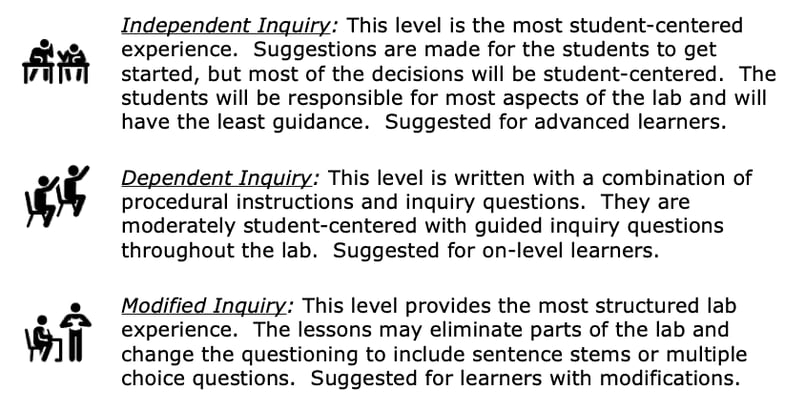Biotic and Abiotic Factors Inquiry Lab
Middle School Inquiry Lab on Biotic and Abiotic Factors
In this lab students will classify and compare biotic and abiotic factors from two different biomes, build a biome from tiles to show how both factors intersect, compare their results to other groups, and identify differences in the balance of biotic-to-abiotic factors between extreme and non-extreme environments.
Each inquiry lab will contain an essential question that will drive the lesson and make students think. For this lesson, the essential question is:
- How do special adaptations of internal structures in organisms help them survive?
BACKGROUND INFORMATION AND MATERIALS LIST:
Students will begin the lab by reading the essential question and background information. This can be done individually, as lab groups, or as a whole class. If you consider lab groups, you also might include some type of whole class formative checks before digging into the lab.

Materials List:
- hand lens
- ruler or 12" piece of string
- paper towels
- “Death Valley” resource tiles and codes
- “Harpers Ferry” resource tiles and codes
- 2 plastic storage bags
PROCEDURE:
This inquiry lab is designed to allow students to see how biotic and abiotic factors are connected to one another. Using two sets of tiles, one representing a desert and the other representing a deciduous forest, students will place a ruler across the tiles. As the ruler lies across the tiles, one student will read out a series of numbers or letters to their partner, who in turn, will decipher the codes using a key. Students track how many letters and numbers were read aloud and determine if any of those were biotic or abiotic factors.
CHECK FOR UNDERSTANDING:
At this point in the lab, students will be checked for understanding by answering questions about their findings. Here are a few that come with the lab:
- Give at least two examples of biotic factors your continuous line transect never touched.
- If you were a researcher, how could this affect your understanding of the biotic parts of this ecosystem?
- How does the number of abiotic factors in this ecosystem compare to the number of biotic factors?
- What are some possible reasons for this situation?
CONCLUSION
Students will go back to the essential question and write a CER (Claim, Evidence, Reasoning) to conclude the lab. Once completed, students will reflect back on their learning by answering the following questions:
- What are some possible reasons for the differences between your results and those of other groups?
- What are some abiotic factors mentioned in the reading that cannot be counted using the continuous line transect method you used in this lab?
- What could a researcher do to get the best picture of all the parts of an ecosystem?
MODIFIED AND INDEPENDENT INQUIRY VERSIONS
All of the Kesler Science inquiry labs come with three different modification levels. Each lab is differentiated using the icons below.
STANDARDS ALIGNMENT
TEKS: 6.12E – Describe biotic and abiotic parts of on ecosystem in which organisms interact.

Download Over $100 in FREE Resources
For Middle School Science
Simply create a login below and gain immediate access to a selection of our Kesler Science product line worth $100 - for FREE. There's a full version of every product type! You'll also join tens of thousands of middle school science teachers who receive timely tips and strategies straight to their inbox.





